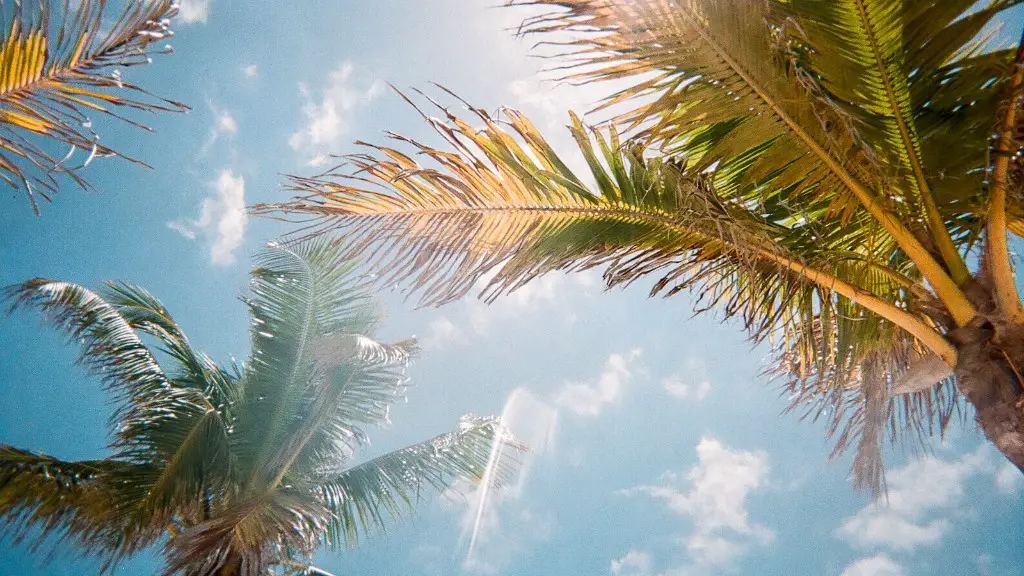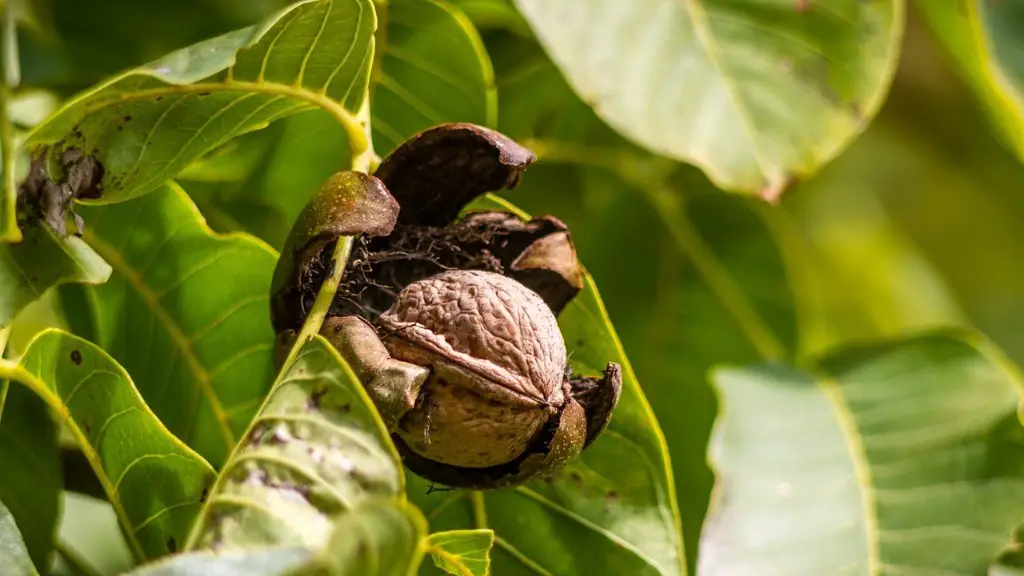What to Plant at the Base of a Palm Tree
Many people think of Palm trees when they imagine the picturesque tropical landscape, however, it can be tricky to know what to plant alongside these iconic plants. When planting at the base of a Palm tree, it is important to select plants that can tolerate the dry and salty environment thatPalms thrive in. That being said, with the right research and selection of plants, anyone can have a lush oasis surrounding their Palm tree.
The first thing to consider when determining what to plant near your Palm is the type of Palm you plan to grow. Many types of Palms such as Canary Island Date and Arizona King Palm, require a specific type of environment that can be hard to replicate with plants. It is important to research the specific needs of the Palm you plan to grow, so that you can select plants that can thrive in similar conditions. Of course, many Palms, such as the Coconut Palms and the Sago Palm, are less picky about their environment and can be planted around nearly any type of vegetation.
Once you know the specific needs of the Palm you want to grow, then you can select the most suitable plants for a lush and successful garden. Generally speaking, it is best to stick with a few hardy plants that can tolerate the dry conditions and salty soils that Palms require. Some great options for this type of environment, include succulents such as Aloe Vera and Sedum, as well as other drought tolerant plants like Agave and Cactus. All of these plants require minimal water and are very hardy.
Additionally, it is important to consider the size of the plants you select. When planting at the base of a Palm tree, you should avoid larger shrubs and trees, as these can damage the root system of the Palm or compete for moisture and nutrients. Instead, go for medium-sized plants and herbs such as mint, basil, and rosemary. These plants not only provide you with flavor for your cooking but also look great around the Palm.
Apart from the size and type of plants, there are also other things to take into account when planting at the base of a Palm tree. Be sure to always check the soil before planting, as some Palms may require a specific type of soil, such as an alkaline soil. Additionally, you should also be mindful of the amount of sunlight the Palm tree requires, and select plants that thrive in that type of environment. For example, shade-tolerant plants such as Hostas or Ferns would be an ideal choice for a Palm tree requiring low light.
Finally, when planting at the base of a Palm tree, it is important to consider the overall effect you want to achieve. If you want to create a lush tropical feel, then you should go for brightly colored and exotic looking plants such as Hibiscus or Wandering Jew. On the other hand, if you’re looking for something more subtle, then choose a mix of foliage plants like Coleus and Ajuga, which will provide contrast but also look great when planted in groups.
Perennials
For someone looking for an easy-to-maintain ground cover near their Palm tree, then perennials are an excellent choice. Perennial plants tend to be low maintenance since they come back every year and are very hardy. Some great perennial options include Lavender, Lamb’s Ears, and Dwarf Blue agave plants. These plants are all relatively low growing and can help to create a lush feeling beneath the Palm tree.
Aside from creating a feeling of abundance, perennials can also help to ward off weeds near your Palm. Many perennials will spread quickly, filling any empty gaps and preventing weeds from taking hold. Additionally, the root systems of some perennials are very effective at retaining moisture in the soil, meaning your Palm has enough water for growth.
Finally, perennials can also provide an extra layer of protection against pests and diseases. Many perennials have strong root systems, which act as a natural barrier against anything that may try to attack your Palm. Additionally, some perennials also produce compounds that can help to keep away pests and diseases, making them ideal for planting near Palms.
Groundcover Plants
For those who want something a bit more hardy and low maintenance, groundcover plants are an ideal choice. Groundcovers such as Ivy and Vinca can spread quickly and fill in any empty patches of dirt, creating an even and lush layer at the base of your Palm. Unlike perennials, groundcovers are very hardy and require little maintenance since they don’t need to be replaced every year. All you have to do is top them up with fertilizer every now and then and they’ll be just fine.
Groundcovers also help to prevent weeds from taking hold, as their thick foliage and root systems crowd out any weeds trying to gain access to the soil. Additionally, they provide protection from the sun, helping to keep your Palm tree from getting scorched. Finally, groundcovers can also help to add extra drainage to the soil, meaning that your Palm can access all the moisture it needs.
Flowering Plants
Flowering plants are a great way to bring life and color to the base of your Palm. From vibrant red Hibiscus to delicate white primroses, there are plenty of options available when it comes to flowering plants. Additionally, the beauty of flowering plants is that they are very low maintenance and can tolerate the same conditions as Palm trees. Just make sure to check the soil before planting, as some plants may require more light or water than the Palm tree.
Apart from creating an eye-catching landscape, flowering plants are also beneficial in other ways. Many flowering plants produce a sweet scent when they bloom, which can help to attract beneficial insects such as butterflies and bees. These insects can help to create a more balanced garden and make sure your Palm tree has all the nutrients it needs.
Finally, flowering plants can also help to reduce the amount of weeds in your garden. The spreading roots and foliage of flowering plants help to crowd out any weeds, reducing the amount of maintenance involved in keeping the garden looking its best. Plus, the flowers are a great addition to any garden, making them a great choice for those looking to add a splash of color beneath their Palm tree.
Grasses
Grasses are another great choice for anyone looking to create a lush oasis at the base of their Palm tree. The grasses commonly used for landscaping are very hardy and can tolerate the same conditions as Palms, making them an ideal choice for anyone looking for an easy-to-maintain garden. Plus, some grasses such as Zoysia and Pampas are very low growing, meaning they won’t compete with the Palm for space.
Grasses can also help to retain water in the soil, making sure the Palm is properly hydrated. Additionally, the roots of some grasses can help to keep the soil from becoming too hot, meaning that the Palm tree can thrive even in dry climates. Finally, grasses can also help to provide an extra layer of protection against pests, as the dense foliage tends to keep away anything that may try to attack the Palm.
Mulches
Mulches are a great option for those looking to keep the soil around the Palm tree moist and healthy. Mulch helps to retain moisture and prevent water from evaporating, meaning that the soil can stay hydrated even in dry climates. Additionally, mulch also slows down the growth of weeds, reducing the amount of maintenance required to keep the garden looking its best.
Aside from the practical benefits, mulch also helps to add an extra layer of protection against pests and diseases. By covering the soil, mulch helps to keep out any pests and diseases from getting near the root system of the Palm, ensuring that it has the best opportunities for growing and thriving.
Finally, mulch also helps to create a more natural look in the garden. The dark color of mulch helps to blend in with other plants around the Palm, creating a cohesive and attractive garden. Plus, mulch is very easy to maintain, requiring only a top up of fresh mulch every now and then. Overall, mulch is an ideal choice for those looking to add an extra layer of protection and moisture to the Palm tree.



